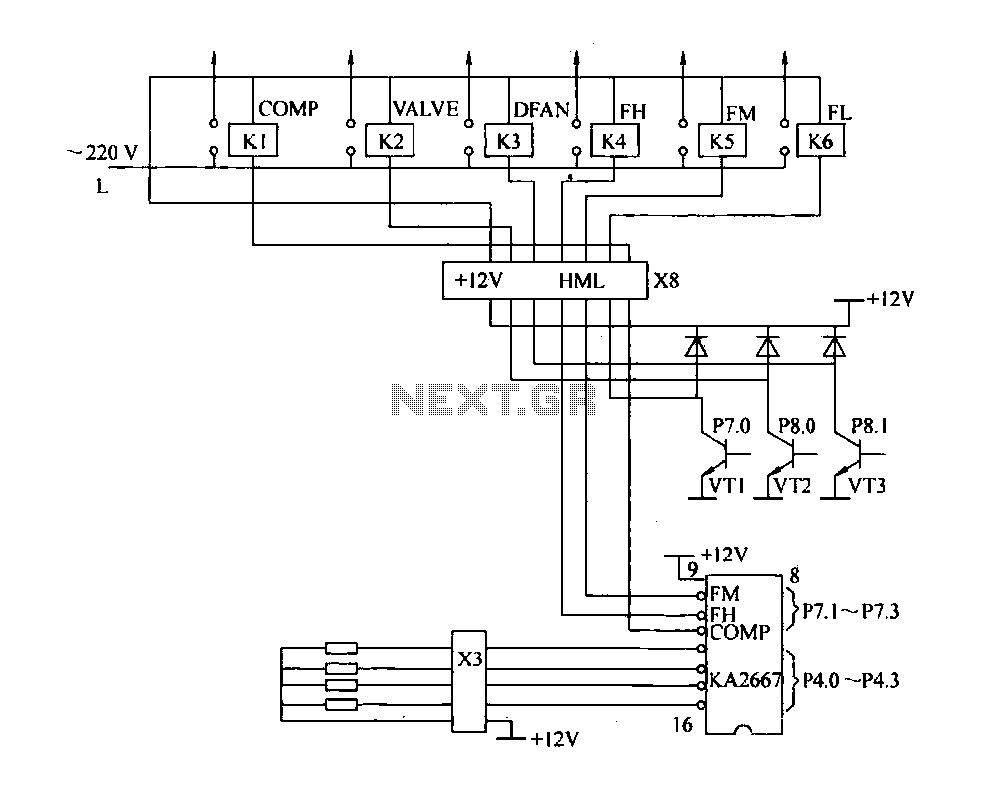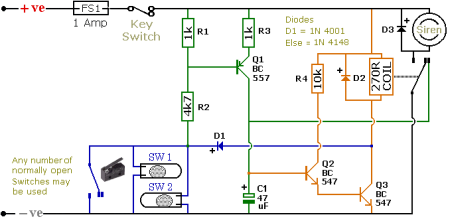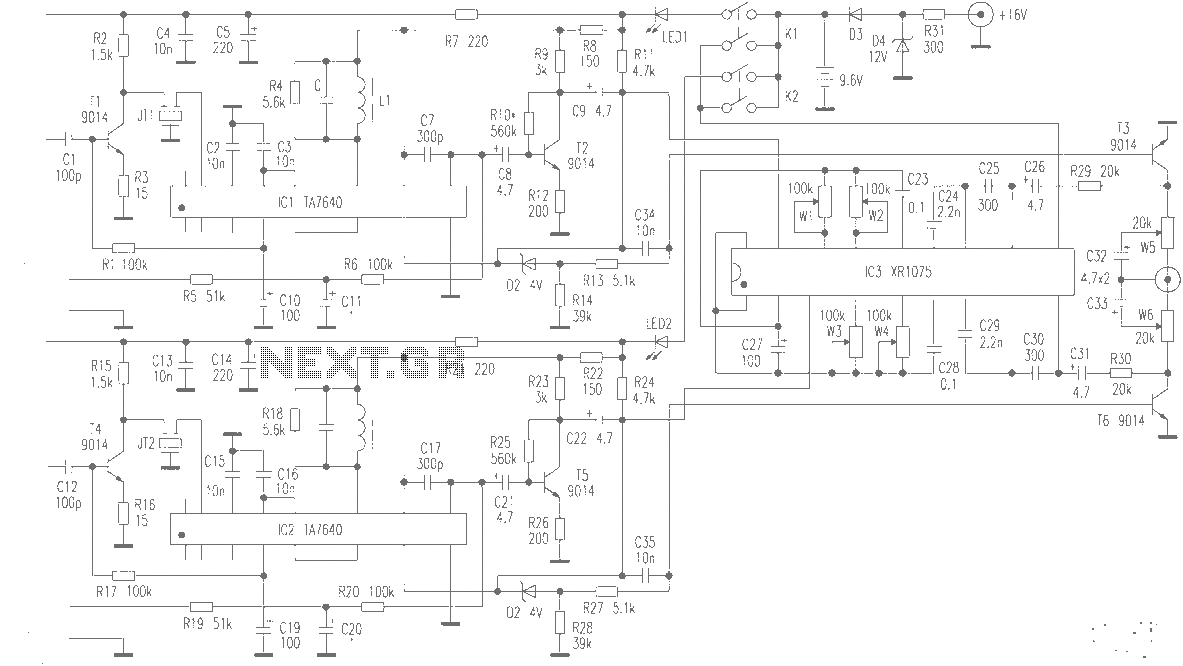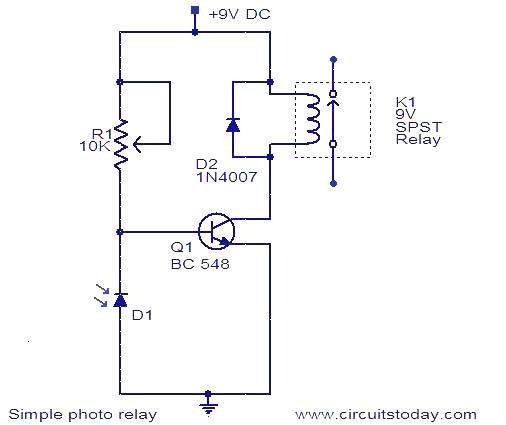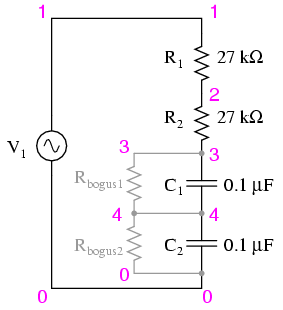
Radio circuit
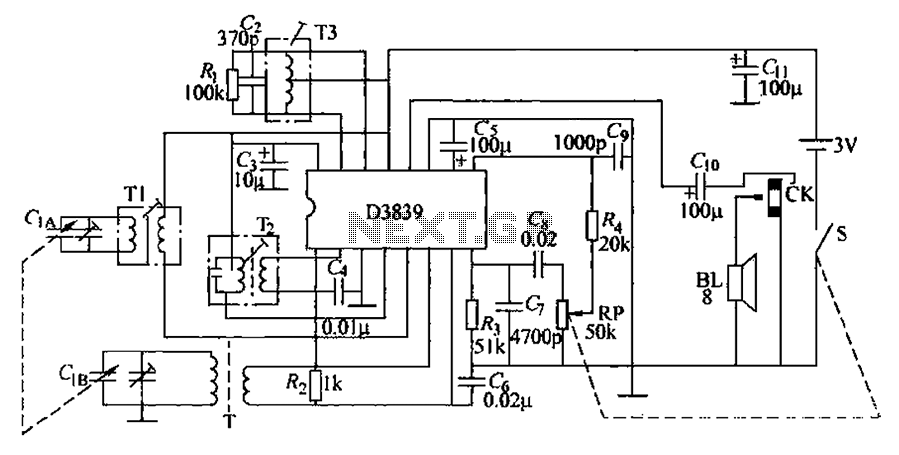
The circuit operates by utilizing a high-frequency section of the antenna to receive AM radio signals, amplifying radio-frequency signals at a selected vibration level of 465 kHz. The intermediate frequency (IF) signal is processed through an IF amplifier, followed by signal detection to extract the useful audio signal. The remaining signals are filtered and subsequently amplified to a low level, which drives the speaker to produce sound.
The circuit design encompasses several key components to ensure effective AM radio signal reception and audio output. The antenna captures AM radio waves, which are then fed into a radio-frequency (RF) amplifier. This amplifier boosts the weak RF signal to a more usable level. The circuit is tuned to a specific frequency, in this case, 465 kHz, which corresponds to the intermediate frequency used in AM radio processing.
Upon amplification, the RF signal is routed to an intermediate frequency amplifier. This stage is crucial as it enhances the selected frequency while reducing unwanted signals. Following amplification, the signal enters a demodulator or detector circuit, which extracts the audio information from the modulated carrier wave. A common method for detection is envelope detection, where the audio signal is retrieved by following the amplitude variations of the RF signal.
After detection, any residual unwanted frequencies are filtered out to ensure that only the desired audio signal is passed on. This is typically achieved using passive or active filter circuits designed to allow specific frequency ranges while attenuating others. The filtered audio signal is then sent to a low-level audio amplifier, which increases the signal strength sufficiently to drive a speaker.
The final output stage is connected to a speaker, converting the amplified audio signal into sound waves. This comprehensive process enables the circuit to effectively receive and reproduce AM radio broadcasts, providing clear audio output from the selected radio frequency. Proper component selection and circuit design are essential for optimizing performance and ensuring high-quality sound reproduction. Circuit works as follows: the high frequency part of the antenna to receive AM radio to a radio-frequency signal amplification crossing, elected by this vibration level 465kHz IF signal, after the intermediate frequency amplifier, satin detection useful in the detection signal, the other signal filtered, put into the low level amplification, push speaker sound.
The circuit design encompasses several key components to ensure effective AM radio signal reception and audio output. The antenna captures AM radio waves, which are then fed into a radio-frequency (RF) amplifier. This amplifier boosts the weak RF signal to a more usable level. The circuit is tuned to a specific frequency, in this case, 465 kHz, which corresponds to the intermediate frequency used in AM radio processing.
Upon amplification, the RF signal is routed to an intermediate frequency amplifier. This stage is crucial as it enhances the selected frequency while reducing unwanted signals. Following amplification, the signal enters a demodulator or detector circuit, which extracts the audio information from the modulated carrier wave. A common method for detection is envelope detection, where the audio signal is retrieved by following the amplitude variations of the RF signal.
After detection, any residual unwanted frequencies are filtered out to ensure that only the desired audio signal is passed on. This is typically achieved using passive or active filter circuits designed to allow specific frequency ranges while attenuating others. The filtered audio signal is then sent to a low-level audio amplifier, which increases the signal strength sufficiently to drive a speaker.
The final output stage is connected to a speaker, converting the amplified audio signal into sound waves. This comprehensive process enables the circuit to effectively receive and reproduce AM radio broadcasts, providing clear audio output from the selected radio frequency. Proper component selection and circuit design are essential for optimizing performance and ensuring high-quality sound reproduction. Circuit works as follows: the high frequency part of the antenna to receive AM radio to a radio-frequency signal amplification crossing, elected by this vibration level 465kHz IF signal, after the intermediate frequency amplifier, satin detection useful in the detection signal, the other signal filtered, put into the low level amplification, push speaker sound.
